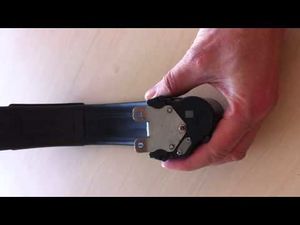Difference between revisions of "Collars"
(Created page with "Category:Mechanical Components{{Knoppen}} <noinclude><!------------------------------------------------ * READ THIS FIRST * Only edit this page if you can improve the conten...") |
|||
| (One intermediate revision by the same user not shown) | |||
| Line 1: | Line 1: | ||
[[Category:Mechanical Components]]{{Knoppen}} | [[Category:Mechanical Components]]{{Knoppen}} | ||
[[File:Collar.jpg|thumb|right|Collars]] | |||
'''Collars''' are used as mechanical stops, locating components, and bearing faces. The simple design lends itself to easy installation. | |||
==Clamping style== | |||
Clamp style collars are designed to solve the problems associated with the set screw collar and come in one- and two-piece designs. Instead of protruding into the shaft, the screws act to compress the collar and lock it into place. The ease of use is maintained with this design and there is no shaft damage. Since the screws compress the collar, a uniform distribution of force is imposed on the shaft, leading to a holding power that is nearly twice that of set screw collars. | |||
Although clamp type collars work very well under relatively constant loads, shock loads can cause the collar to shift its position on the shaft. This is due to the very high forces that can be created by a relatively small mass during impact, compared to a statically or gradually applied load. As an option for applications with this type of loading, an undercut can be made on the shaft and a clamp collar can be used to create a positive stop that is more resistant to shock loads. | |||
Perhaps the most innovative and useful of the collars is the two-piece clamping collar. Two-Piece Clamp Style shaft collars can be disassembled or installed in position without having to remove other components from the shaft. The two-piece design provides the most holding power of all shaft collars because more compressive forces are utilized to lock the collar onto the shaft. | |||
Latest revision as of 23:22, 27 January 2013
Collars are used as mechanical stops, locating components, and bearing faces. The simple design lends itself to easy installation.
Clamping style
Clamp style collars are designed to solve the problems associated with the set screw collar and come in one- and two-piece designs. Instead of protruding into the shaft, the screws act to compress the collar and lock it into place. The ease of use is maintained with this design and there is no shaft damage. Since the screws compress the collar, a uniform distribution of force is imposed on the shaft, leading to a holding power that is nearly twice that of set screw collars.
Although clamp type collars work very well under relatively constant loads, shock loads can cause the collar to shift its position on the shaft. This is due to the very high forces that can be created by a relatively small mass during impact, compared to a statically or gradually applied load. As an option for applications with this type of loading, an undercut can be made on the shaft and a clamp collar can be used to create a positive stop that is more resistant to shock loads.
Perhaps the most innovative and useful of the collars is the two-piece clamping collar. Two-Piece Clamp Style shaft collars can be disassembled or installed in position without having to remove other components from the shaft. The two-piece design provides the most holding power of all shaft collars because more compressive forces are utilized to lock the collar onto the shaft.
